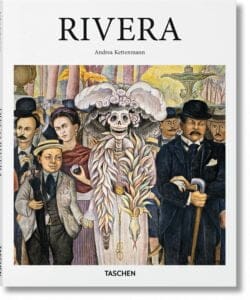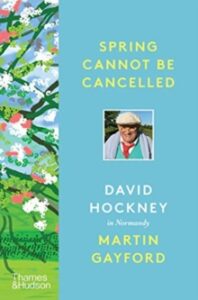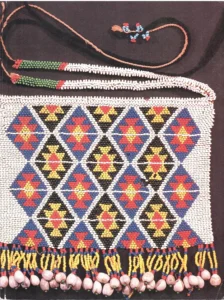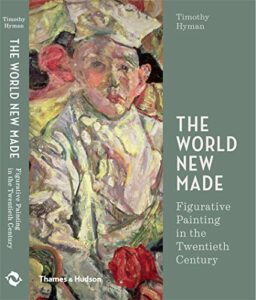Objects in Focus: Bronze Head From Ife (British Museum)
R90Part of the British Museum’s Objects in Focus series, this compact book offers a well illustrated guide to the crowned bronze head unearthed at Ife in Nigeria in 1938.
Showing 33–48 of 181 results

Part of the British Museum’s Objects in Focus series, this compact book offers a well illustrated guide to the crowned bronze head unearthed at Ife in Nigeria in 1938.

For the past decade, in an ongoing project titled The Lost Men, renowned artist Paul Emmanuel has challenged conventions around war memorials. He has questioned which soldiers are memorialised and which are erased, and the stereotypes around soldiers and masculinity. Featuring artworks from his three iterations of The Lost Men, Paul Emmanuel Men and Monuments highlights vulnerability, an aspect of masculinity so often denied by history and society.

This a collection of German expressionist prints that lead from the late 19th century to the early 2000s. The works were comprised from the exhibition held at the Faulconer Gallery in January 23––March 15, 2015.

A book examining the Pre-Raphaelite Painting techniques and innovations that produced a revolution in Art.

Combining rebellion and revivalism, scientific precision and imaginative grandeur, the Pre-Raphaelite Brotherhood shook the mid-nineteenth-century art world and were effectively Britain’s first modern art movement. Today the works of the Pre-Raphaelites are among the best known of all English paintings, and yet they have sometimes been dismissed as Victoriana or mere escapism. This book corrects that view.

Fusing European influences such as Cubism with a socialist ideology and an exaltation of Mexico’s indigenous and popular heritage, he created a new iconography for art history and for his country. He became one of the most important figures in the Mexican mural movement and won international acclaim for his public wall paintings, in which he presented a utopian yet accessible vision of a post-revolutionary Mexico.

So when Covid-19 and lockdown struck, it made little difference to life at La Grande Cour, the centuries-old Normandy farmhouse where Hockney set up a studio a year before, in time to paint the arrival of spring. In fact, he relished the enforced isolation as an opportunity for even greater devotion to his art.

 Out of stock
Out of stockThis collection of 40 essays by Ashraf Jamal can be regarded as a companion to his previous book, In the World: Essays on Contemporary South African Art. Together, they form a single venture to celebrate and entrench the rich complexity of South African artists in a global imaginary.

Ten Years of Collecting (1979-1989), David Hammond-Tooke and Anitra Nettleton, softcover, published by the University of the Witwatersrand, 1989, tearing, creasing and wear to cover, shelf wear.

The Pre-Raphaelites and Their World discusses the lives and work of these friends and arch-rivals. Illustrated with photographs of the artists and reproductions of some of their finest paintings, it includes a history of the society from which the artists emerged, with a discussion of the position of women and the role of religion and literature in Pre-Raphaelite art.

The Standard Bank Foundation of African Art, housed at the University of the Witwatersrand Art Galleries was begun ten years ago. This exhibition, one of the largest of its kind ever held in South Africa, commemorates a partnership which expresses the true ideals of both private enterprise and public education in this country.

From the stolen Wakandan art in Black Panther, to Emmanuel Macron’s recent commitment to art restitution, and Beyoncé and Jay Z’s provocative music video filmed in the Louvre, the question of decolonising our relationship with the art around us is quickly gaining traction. People are waking up to the seedy history of the world’s art collections, and are starting to ask difficult questions about what the future of museums should look like.
In The Whole Picture, art historian and Uncomfortable Art Tour guide Alice Procter provides a manual for deconstructing everything you thought you knew about art, and fills in the blanks with the stories that have been left out of the art history canon for centuries.

A bold new critique of the accepted history of figurative painting in the twentieth century.
In The World New Made, critic Timothy Hyman argues that abstraction was just one of the means by which artists renewed pictorial language. Focusing on those painters who bucked tradition and opted for a new kind of figuration, Hyman presents them as a countermovement to the sometimes oppressive stylistic imperative that set in as Cubism became a movement. Around the world, artists such as Max Beckmann, Fernand Léger, Balthus, Paula Rego, Marc Chagall, Stanley Spencer, R. B. Kitaj, Philip Guston, Picasso, Matisse, Lucian Freud, and others found an idiom for human-centered painting. Together they offer a counterargument to Western formalism, but also a foundation for the figurative painters of the twenty-first century.

Catalogue from the exhibition “Trans positio ns – Five Swedish Artist in South Africa” which was on display between 28/3-10/5 1998 at The South African National Gallery, Cape Town, in collaboration with Moderna Museet. It included works by: Elisabet Apelmo, Matts Leiderstam, Annika Lundgren, Elin Wikström and Måns Wrange.

Uncertain curature is a volume of bold and original explorations of the archive – the past, our material inheritance – and the ways it is displayed, interpreted and given meaning in the postcolonial world of South Africa. This operation on the past – what the authors have called ‘curature’ – can be seen as the postcolony’s way of rescripting its own history, which is both a trauma to be dealt with and a resource for the future.
No products in the basket.